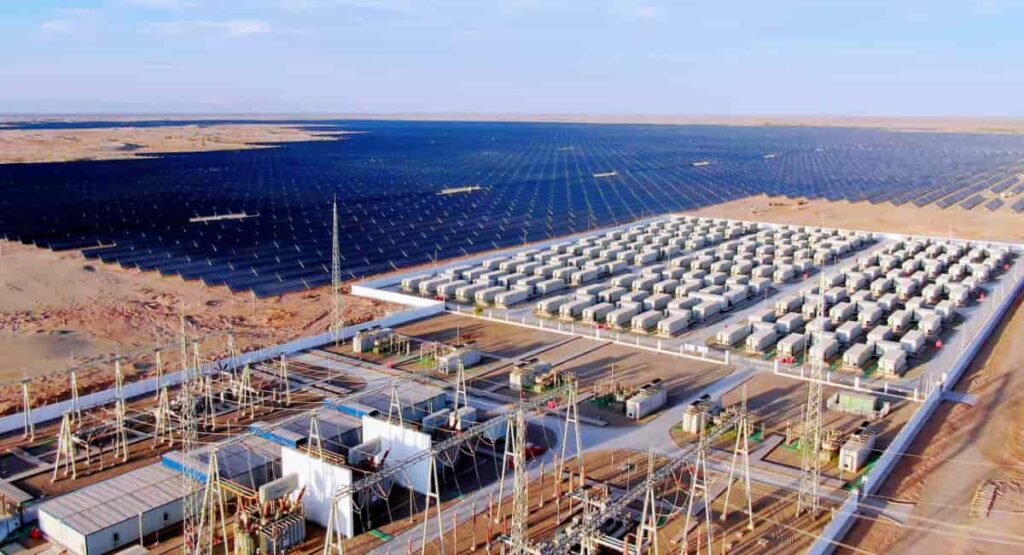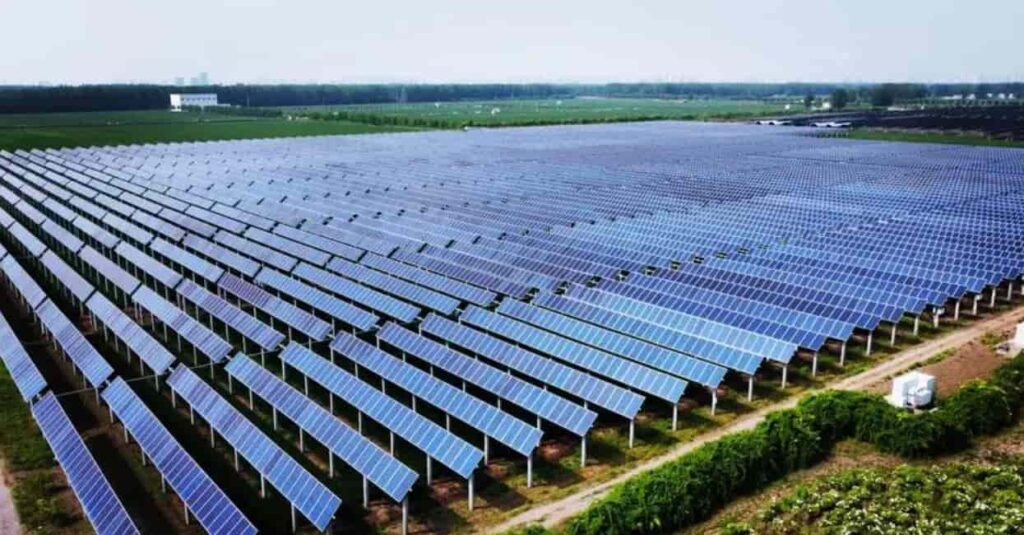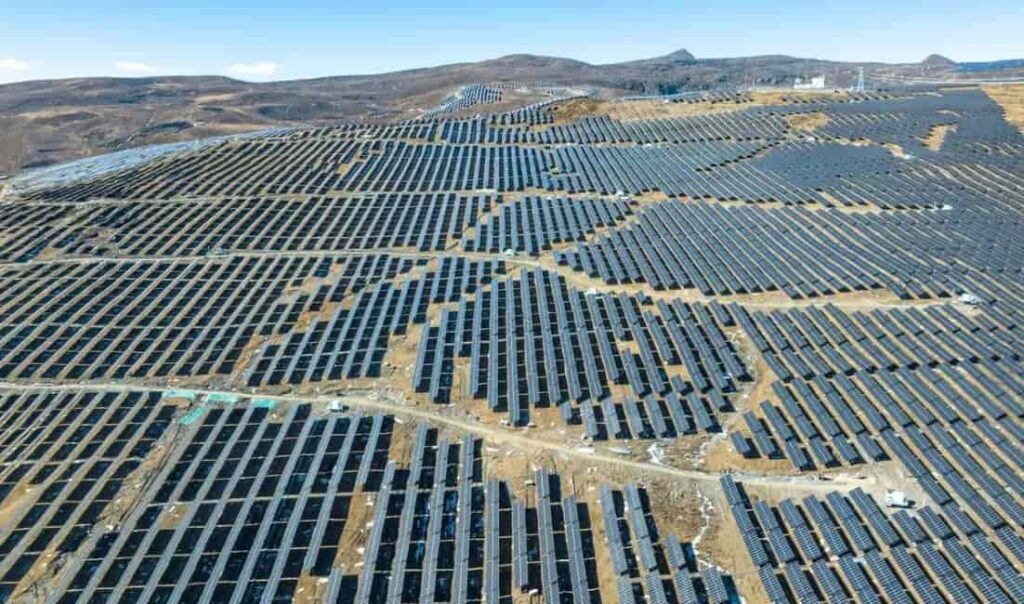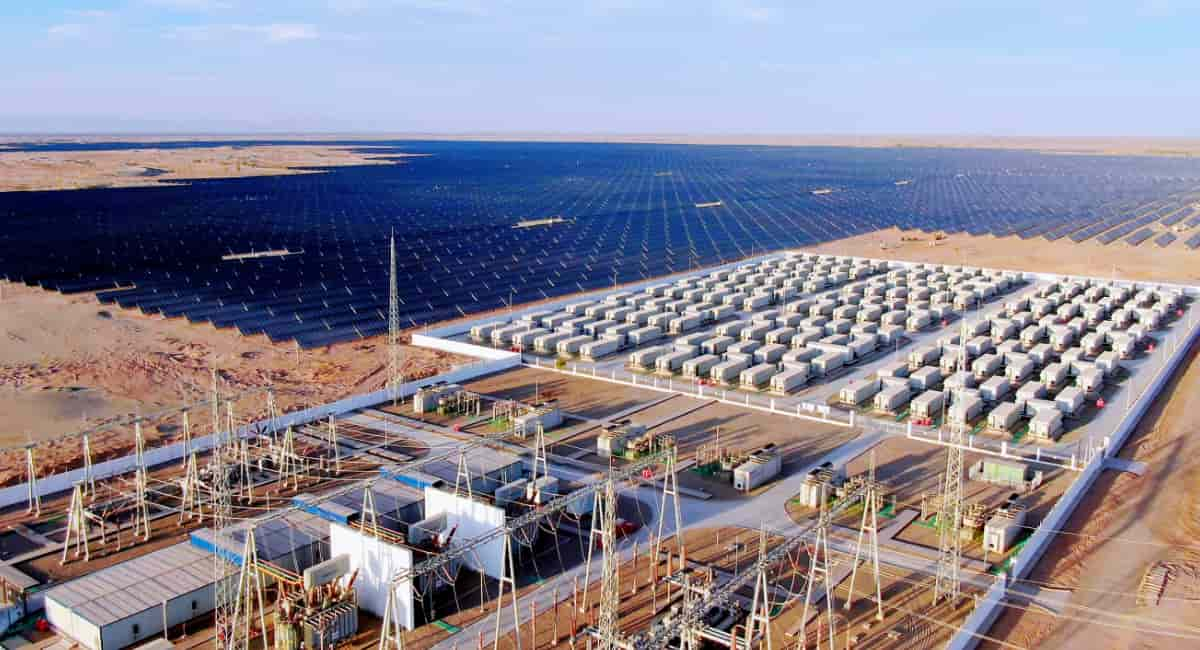
Solar power plants are at the forefront of renewable energy generation, transforming the way we harness the sun's abundant, clean energy. With advances in technology and growing global awareness about sustainable energy, Solar power plants are becoming increasingly popular around the world. In this article, We delve into the various aspects of solar energy plants, including solar farming, on-grid and off-grid solar systems, solar energy generation and specific case studies such as Ivanpah Solar.
Introduction to solar power plants
Las solar power plants, also known as solar power plants or solar generation plants, are large-scale facilities designed to convert solar radiation into electricity. These plants use photovoltaic cells (PV), concentrated solar energy systems (CSP) or a combination of both to generate electricity that can be used directly or integrated into the national grid.
Solar power plants offer numerous advantages over conventional energy sources, like coal, oil and natural gas. They are clean, renewable and do not emit greenhouse gases during operation. Besides, solar energy is practically inexhaustible, making it an ideal long-term solution for energy security and climate change mitigation.
Types of solar power plant
Solar power plants can be classified into two categories: photovoltaic power plants (PV) and concentrated solar power plants (CSP).
Photovoltaic power plants (PV)
Photovoltaic power plants use solar panels, containing photovoltaic cells that convert sunlight directly into electricity. These panels are usually mounted on racks or followers to optimize their exposure to the sun throughout the day.. The electricity generated by photovoltaic systems is direct current (CC), which is then converted into alternating current (CA) through inverters for use in homes, companies or network integration.

Photovoltaic power plants can be further classified into:
Utility-Scale Photovoltaic Power Plants: are large-scale facilities designed to generate electricity for distribution to the national grid. They can range in size from a few megawatts (MW) up to hundreds of MW, capable of supplying thousands of homes. Distributed photovoltaic systems: They are smaller scale facilities, which are usually installed on roofs or other structures, and are designed to supply electricity directly to the building or community where they are located.
Concentrated solar power plant (CSP)
CSP plants use mirrors or lenses to concentrate sunlight into a small area, heating a fluid that generates steam to drive a turbine and produce electricity. CSP systems can reach higher temperatures than photovoltaic systems, making them suitable for industrial applications requiring high temperature heat.
CSP plants typically consist of four main components:
Solar collectors: they could be mirrors (parabolic channels or heliostats) that reflect sunlight onto a central receiver.
Heat transfer fluid: the fluid absorbs concentrated heat from solar collectors and is then used to generate steam.
Steam turbine: steam drives a turbine, that spins a generator to produce electricity.
Storage system: Some CSP plants include thermal storage systems that allow them to generate electricity even when the sun is not shining. On-grid and off-grid solar systems
Solar power plants can be connected to the national grid (connected to the network) or operate independently (disconnected from the network). Each system has its unique advantages and limitations.

Grid-tied solar energy systems
Grid-tied solar energy systems are connected to the electrical grid, allowing them to supply electricity to the grid and draw energy from it when necessary. This configuration is ideal for locations with reliable grid infrastructure and allows for the seamless integration of renewable energy into the electrical grid..
Grid-connected systems offer several benefits:
Net metering: many utilities offer net metering programs, allowing customers with solar installations to sell excess electricity back to the grid at retail prices.
Reliability: in case of a power outage, Grid-tied systems with battery backup can provide emergency power.
Efficiency: Grid-connected systems can optimize their energy production based on grid demand and prices, reducing waste and maximizing profitability.
Off-grid solar energy systems
Off-grid solar energy systems, also known as off-grid or stand-alone systems, operate independently of the national grid. They are ideal for remote locations without access to grid infrastructure or for applications requiring complete power autonomy.
Off-grid systems include the following components:
solar panels: convert sunlight into DC electricity.
Batteries: They store electricity generated during daylight hours for use at night or when it is cloudy.
Investor: converts DC electricity from solar panels into AC electricity suitable for home appliances.
charge controller: regulates the flow of electricity from solar panels to batteries, which prevents overloading and ensures
Long lasting battery.
Off-grid systems offer several advantages:
Energy independence: ideal for remote locations or applications where network connectivity is unreliable or unavailable.
Reduced energy costs: over time, The cost savings of generating your own electricity can be significant.
Environmental benefits: reducing dependence on fossil fuels and reducing greenhouse gas emissions.
Case study: Ivanpah Solar Energy Installation
The Ivanpah Solar Electricity Generation System, located in the Mojave Desert in California, It is one of the largest CSP plants in the world. Use thousands of heliostats (large mirrors) to concentrate sunlight on a central tower, heating a boiler to produce steam that drives a turbine to generate electricity.
Main features of Ivanpah Solar
Ability: The plant has a total capacity of 392 megawatts (MW), enough to supply approximately 140.000 homes.
Technology: Ivanpah uses a parabolic trough design with heliostats that can track the sun throughout the day, maximizing energy capture. Thermal storage: The plant includes a thermal storage system that allows it to generate electricity up to three hours after sunset.
Environmental benefits: Ivanpah avoids approximately 400.000 tons of carbon dioxide emissions per year, which is equivalent to withdrawing 80.000 highway cars.
solar power plant challenges and solutions
Despite its success, Ivanpah has faced several challenges, including bird mortality caused by the intense heat generated by heliostats. To mitigate this problem, the plant has implemented measures such as reducing the intensity of sunlight reflected on the tower during migration periods and installing bird deterrents.
Advantages of solar power plants
Solar power plants offer numerous advantages over traditional energy sources, between them:
Clean and renewable: Solar energy is a clean and renewable resource that does not emit greenhouse gases during its operation..
Abundant and widely available: The sun shines practically everywhere on Earth, making solar energy accessible to a wide range of locations.
Scalable: Solar power plants can be designed to meet the energy needs of small communities or entire regions. Reliability: Solar energy systems have few moving parts, which makes them highly reliable and require minimal maintenance.
Economic benefits: Over time, The cost savings from generating your own electricity can be significant, reducing energy bills and creating jobs in the renewable energy sector.
Solar power plant challenges and limitations
While solar power plants offer numerous advantages, They also face several challenges and limitations:
Intermittence: Solar energy is only available during daylight hours, making it an intermittent energy source. This can be mitigated by using energy storage systems or by integrating solar energy with other renewable energy sources..
land use: Large-scale solar power plants require significant amounts of land, which can affect local ecosystems and wildlife habitats. Careful planning and environmental impact assessments are crucial to minimizing these impacts..
Cost: While the cost of solar energy has decreased significantly in recent years, may still be more expensive than some traditional energy sources, particularly in areas with high installation costs or limited sunlight.
Climate dependence: Solar energy production can be affected by weather conditions, like clouds and storms. However, this can be mitigated by the use of energy storage systems.
Solar power plant future prospects
As technology continues to advance and global demand for renewable energy increases, Solar power plants are poised to play a critical role in the energy mix of the future. Advances in solar cell efficiency, Energy storage and grid integration technologies will help overcome some of the challenges solar energy currently faces.
Besides, Growing awareness of climate change and the need for sustainable energy solutions is driving governments, companies and people to invest in renewable energy projects. This trend is expected to continue, which will lead to significant growth in the solar power plants market in the coming years.
Conclusion
Solar power plants are an essential component of the global transition to a clean and sustainable energy future. By harnessing the sun's abundant and renewable energy, These plants offer numerous advantages over traditional energy sources, including cleaning, reliability and economic benefits. While challenges such as intermittency and cost remain, Ongoing technological advancements and growing global demand for renewable energy are expected to drive significant growth in the solar power plants market.
As we continue to explore new ways to harness the sun's energy, Solar power plants will play a critical role in reducing our dependence on fossil fuels, mitigating climate change and creating a more sustainable future for all.

